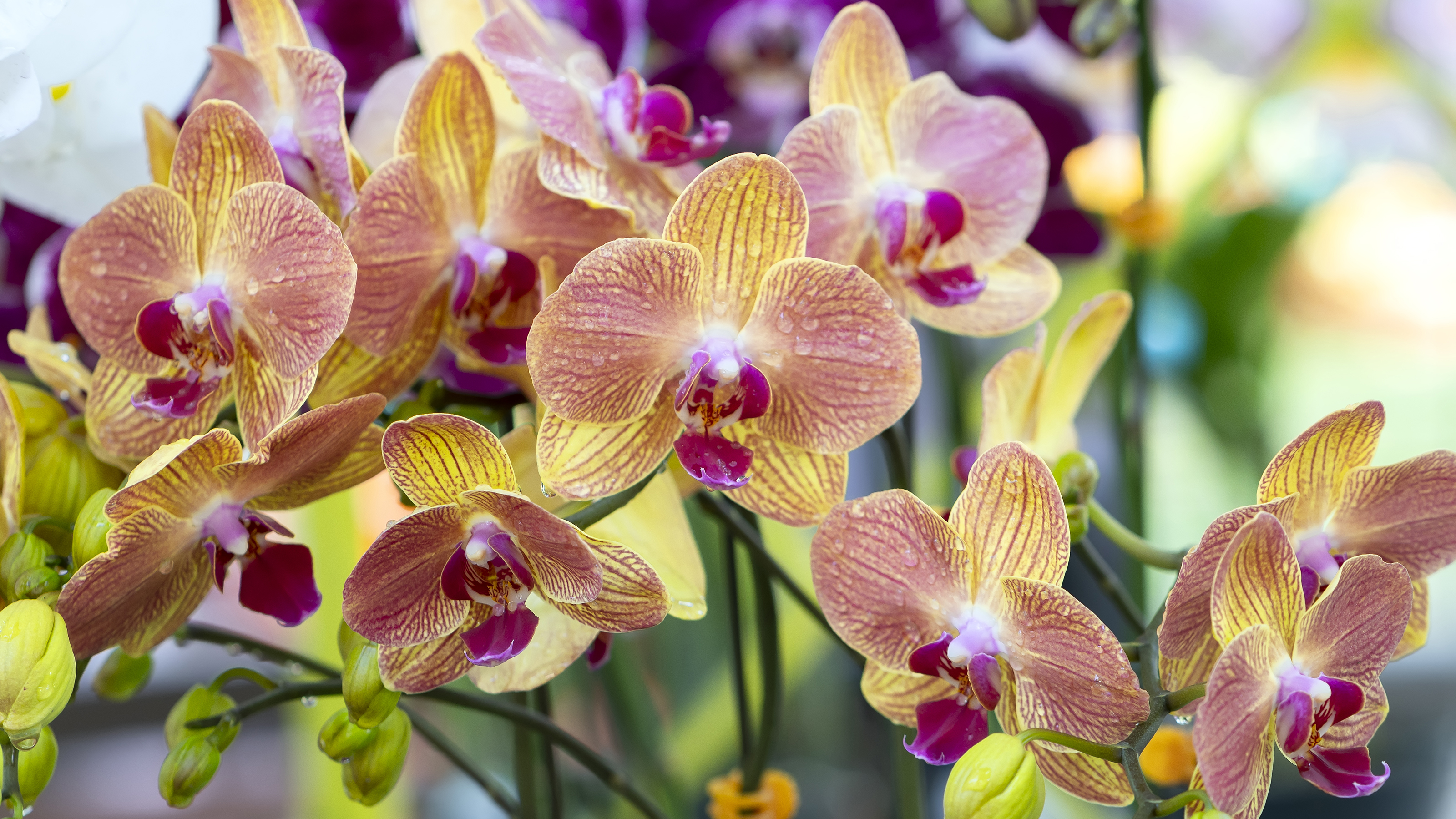
The second largest family of flowering plants, orchids grow on all seven continents in various climates. Despite their prolificity, orchids get a bit of a bad rap – noted more for their difficulty when cultivated.
Though orchid care can prove challenging for some growers, the plants' sheer beauty tempts many of us to grow them, sometimes with disastrous results. Beginners are often guilty of making a multitude of orchid care mistakes.
All is not lost, however. With a tally of about 28,000 types of orchids, there’s sure to be an easy-to-grow – or at least easier – orchid for even the newest houseplant enthusiast.
Keep reading to learn about our top 5 hard-to-kill orchids that anyone can grow.
1. Phalaenopsis or Moth Orchid
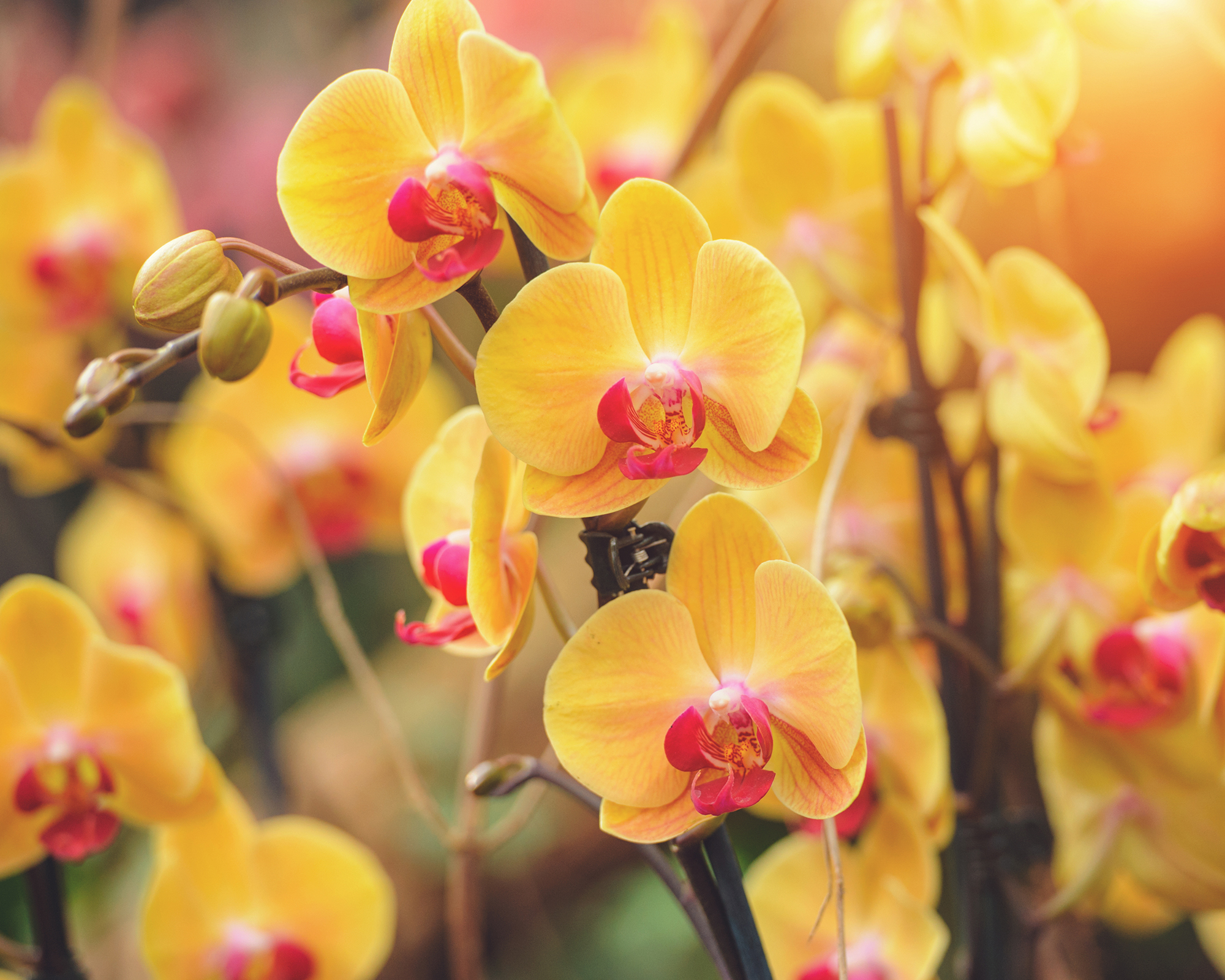
The Phalaenopsis orchid – or moth orchid – is the most common type grown as a houseplant. Often called “beginner’s orchids", Phals can be purchased almost everywhere from Walmart to the local supermarket.
They come in an array of colors and while they look exotic, easily thrive in average home temperature, humidity, and light conditions. Their stunning blooms last for 2-3 months and, with proper care, the plant can live for 15-20 years.
To meet its orchid light requirements, position Phalaenopsis in partial to full shade, ideally in an east-facing window.
Sign up for the Gardening Know How newsletter today and receive a free copy of our e-book "How to Grow Delicious Tomatoes".
Beginners often worry about how to water orchids, but a good soaking every 7 days usually suffices.
Phalaenopsis thrives with orchid fertilizing once a month. Use a fertilizer made for orchids. Gently wash the leaves off with a soft cloth dipped in water. Repot orchids every year or so.
2. Dendrobium Orchid
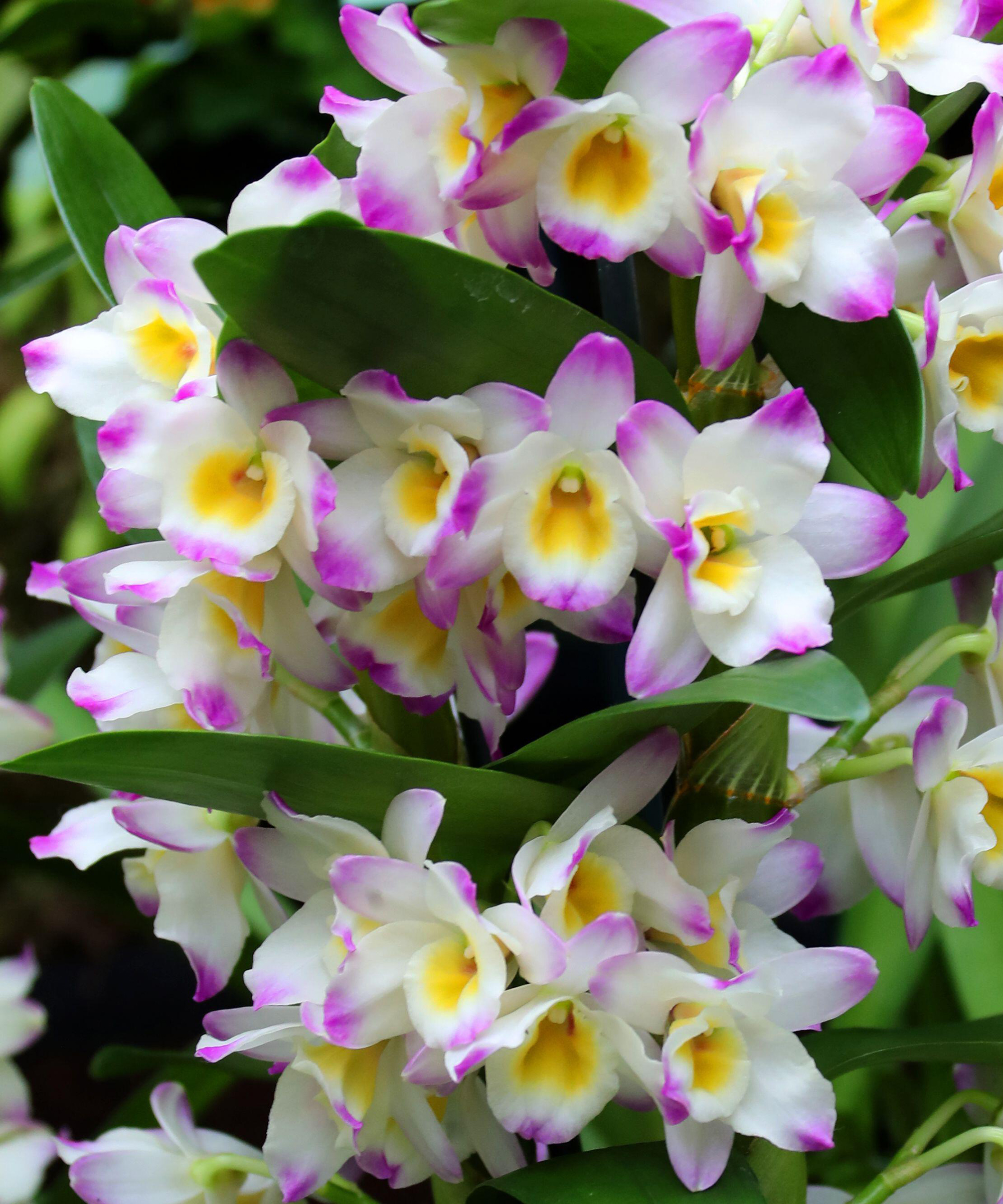
Dendrobium orchids comprise one of the largest genera of orchids. Native to much of Asia, Australia, Vietnam, and many Pacific Islands, Dendrobium orchids are primarily epiphytic or lithophytic, although a few grow in soil.
They bloom from the top of their canes, producing up to 20 often aromatic blooms that last for 1-3 months.
Like Phalaenopsis orchids, Dendrobium orchids should be kept in an area that receives partial sun for at least 6 hours per day, such as an eastern exposure window.
To make orchids rebloom, water is often withheld for several weeks in the late fall. Except for this dormancy period, water these orchids weekly and feed them at the same time with a weak orchid fertilizer solution.
The easiest Dendrobium orchid to cultivate is D. kingianum, a fast-growing orchid that adapts well to a variety of conditions.
3. Cattleya Orchid
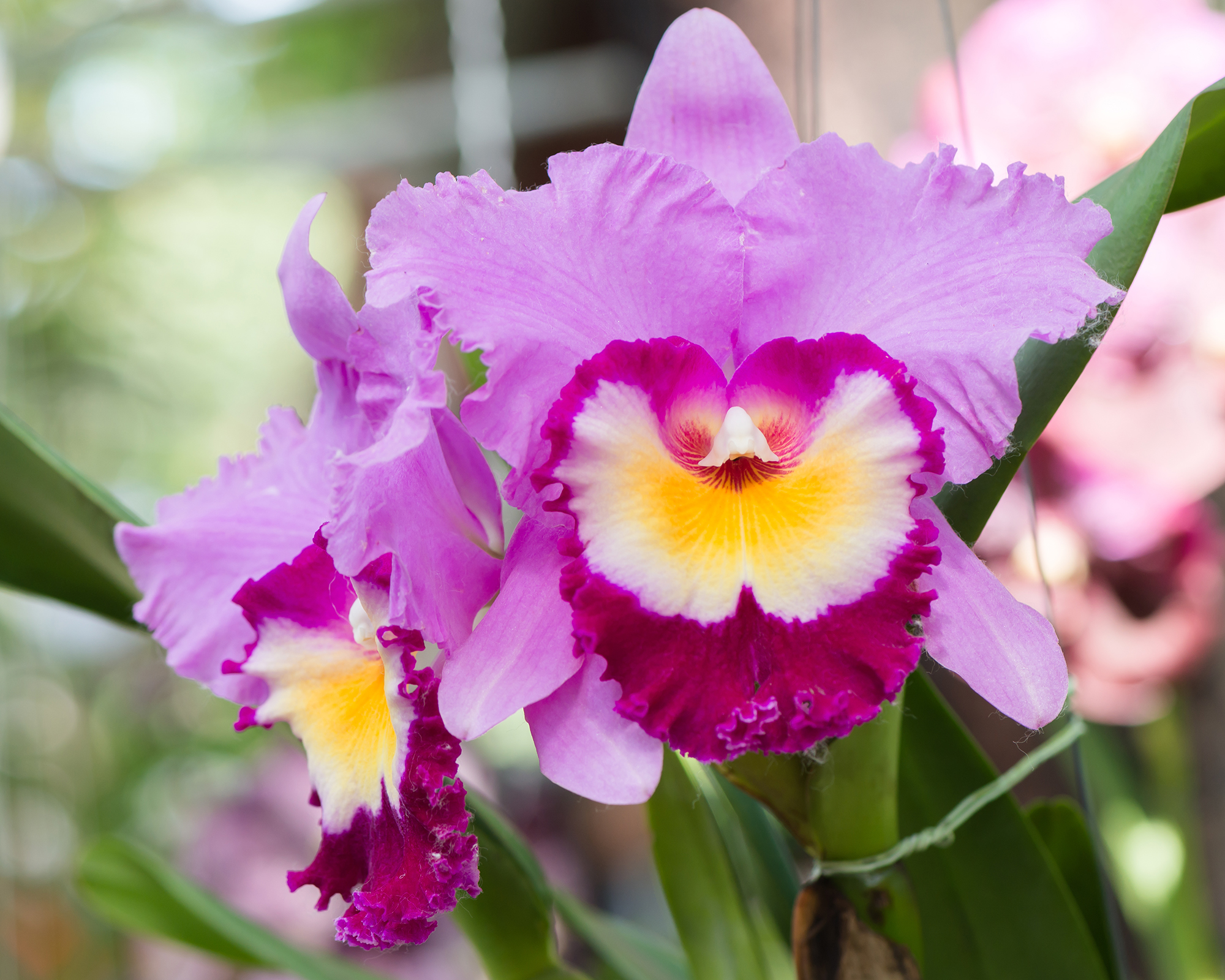
Referred to as the “corsage orchid”, the Cattleya orchid is a popular florist orchid that comes in a variety of hybridized colors, often accented with streaking or speckles.
Cattleya orchids like a warm room of at least 70-80°F (21-27°C) during the day, with plenty of bright yet indirect light; again, an easterly window is best. This orchid likes a humidity range of between 40-70%.
Native to Costa Rica and areas of South America, this flamboyant orchid only flowers about once a year, but what a flowering it is! That said, there is a hybrid of Cattleya and Laelia orchids that has been created to bloom more than once a year.
Water weekly or when the orchid potting medium is dry. Do not overwater or let this orchid sit in water. Fertilize with an orchid food at quarter strength each week.
Unfortunately, orchid pests seem to adore this variety. Keep an eye out for scale, thrips, and spider mites. That said, they make great beginner orchid houseplants.
4. Cymbidium Orchid
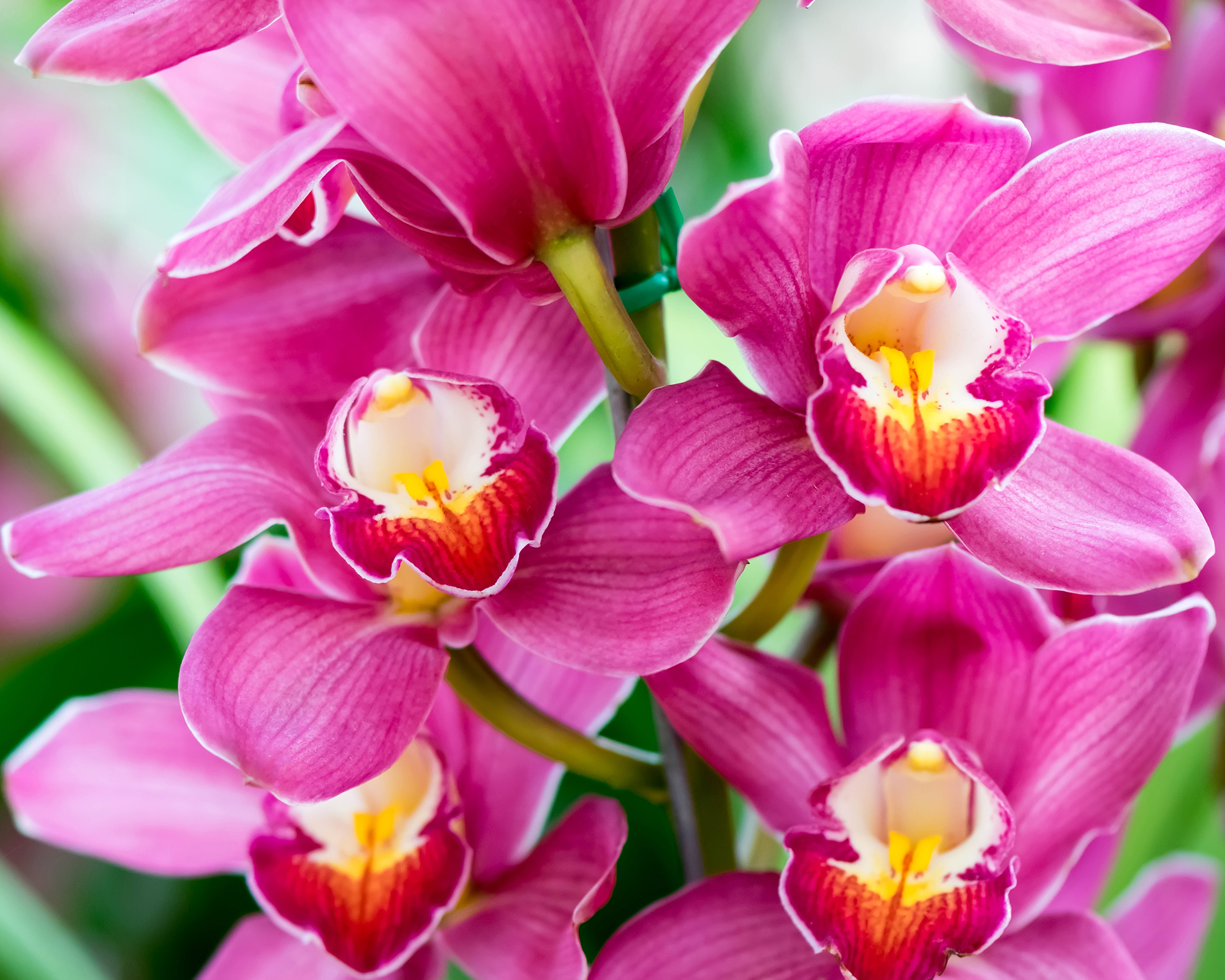
Cymbidium orchids – or boat orchids – have large, waxy blooms that come in an array of colors. One of the oldest horticultural orchids in the world, cymbidium makes an excellent cut orchid. Native from much of India to South-East Asia, boat orchids have a unique three-lobed lip.
The large, 4-5 inch (10-12cm) wide flowers are produced in the summer. Some species or hybrids of Cymbidium are also sweetly scented.
Cymbidium thrives in warm, humid conditions with a distinct drop in temperature at night. Water each week to keep the medium moist and fertilize after watering with diluted orchid food.
The smaller Asian miniature Cymbidiums are perfect for beginner orchid growers as they do not need a chilling period to trigger blooming and acclimate well to the warm year-round temperatures of the home environment.
5. Paphiopedilum Orchid
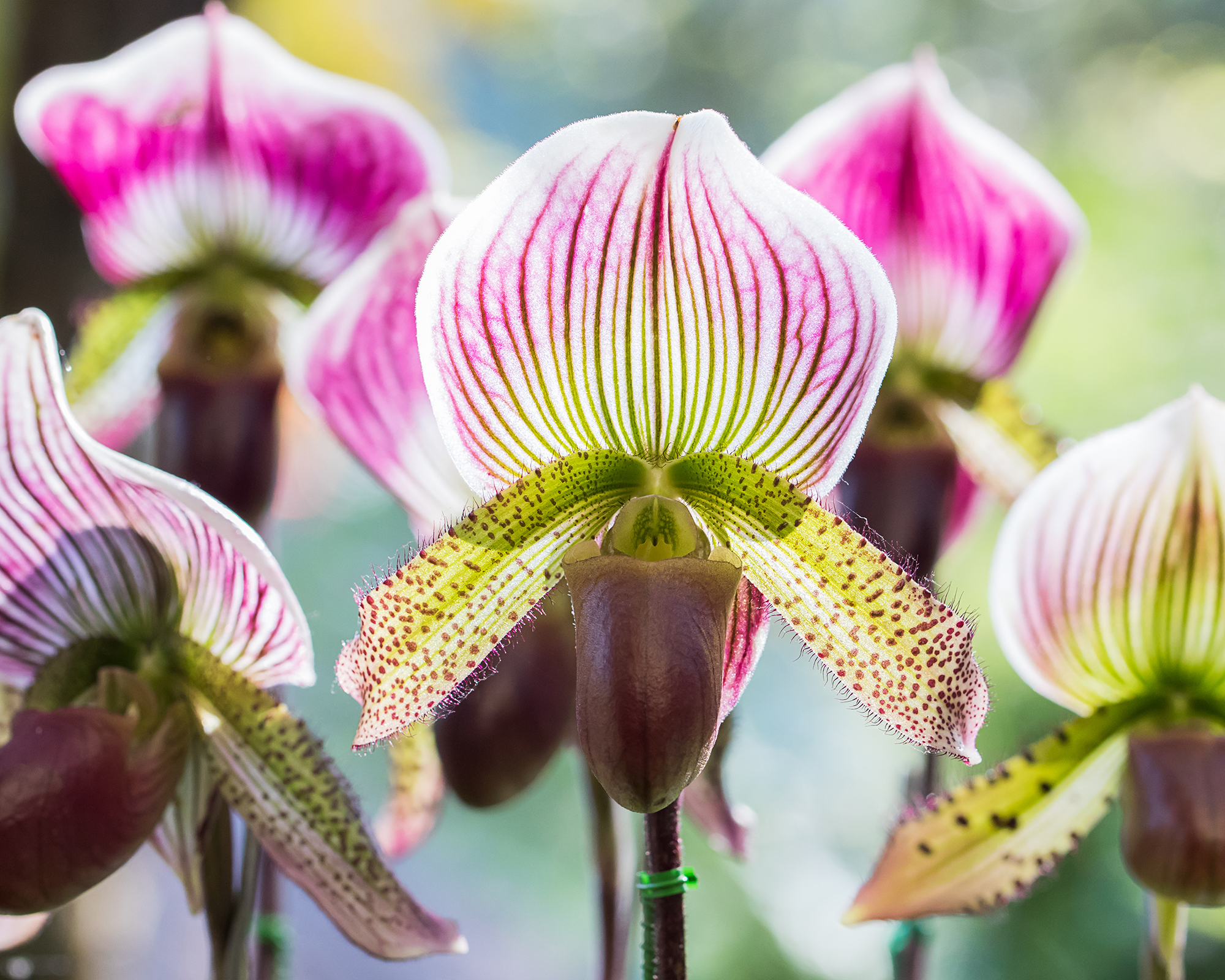
Paphiopedilum orchids – or "slipper" orchids – are semi-terrestrial orchids. They grow in humus on cliffs or the forest floor.
If you can grow the African violet – a common blooming houseplant – you can easily grow slipper orchids. Plus Paphiopedilum is one of the easiest orchids to get to rebloom.
The blooms have a unique slipper-shaped lip available in a multitude of colors replete with strips, hairs, and other markings that usually bloom from November to March. The gloriously quirky blooms can last for up to 3 months and generally need to be staked.
There are two types of Paphiopedilum: warm and cool. Warm slipper orchids require temperatures between 75-85°F (23-29°C) during the day and 60-65°F (15-18°C) at night, while their cooler counterparts need daytime temperatures of 75-80°F (23-26°C) and 50-60°F (10-15°C) at night.
Either variety requires low lighting conditions. Shade to partial shade during the summer and in a bright window in the winter.
Slipper orchids are not pseudobulb orchids, which are better at retaining water, so need watering 1-2 times per week. Reduce the amount of water in the winter months. Keep the plant in an area of 40-50% humidity and fertilize once a week after water with a high nitrogen food at a quarter strength.
This plant is also easy to propagate via division at maturity. Pull or cut the leaf fans apart into 3-5 clumps after the orchid has bloomed.

Amy Grant has been gardening for 30 years and writing for 15. A professional chef and caterer, Amy's area of expertise is culinary gardening.
